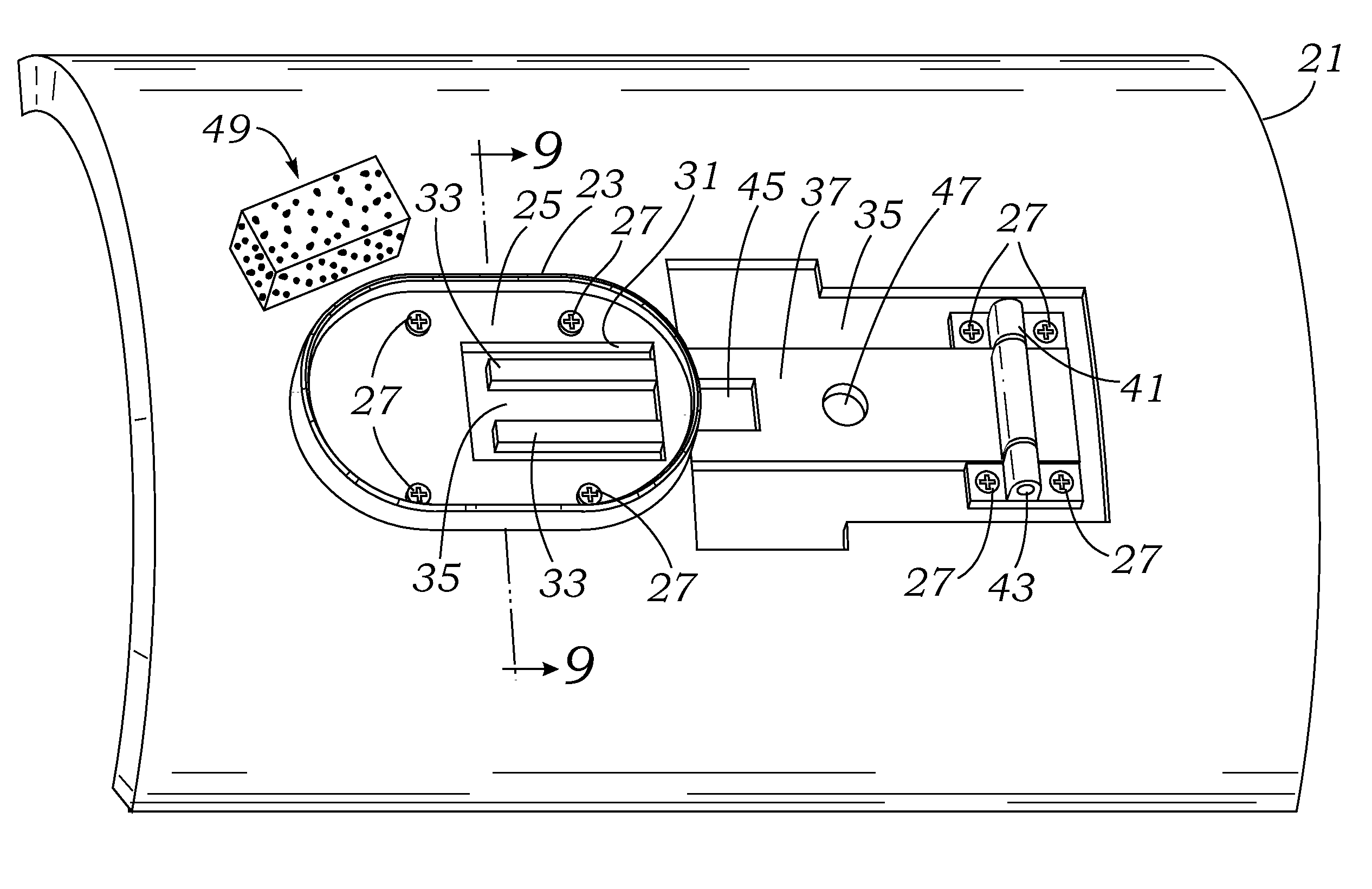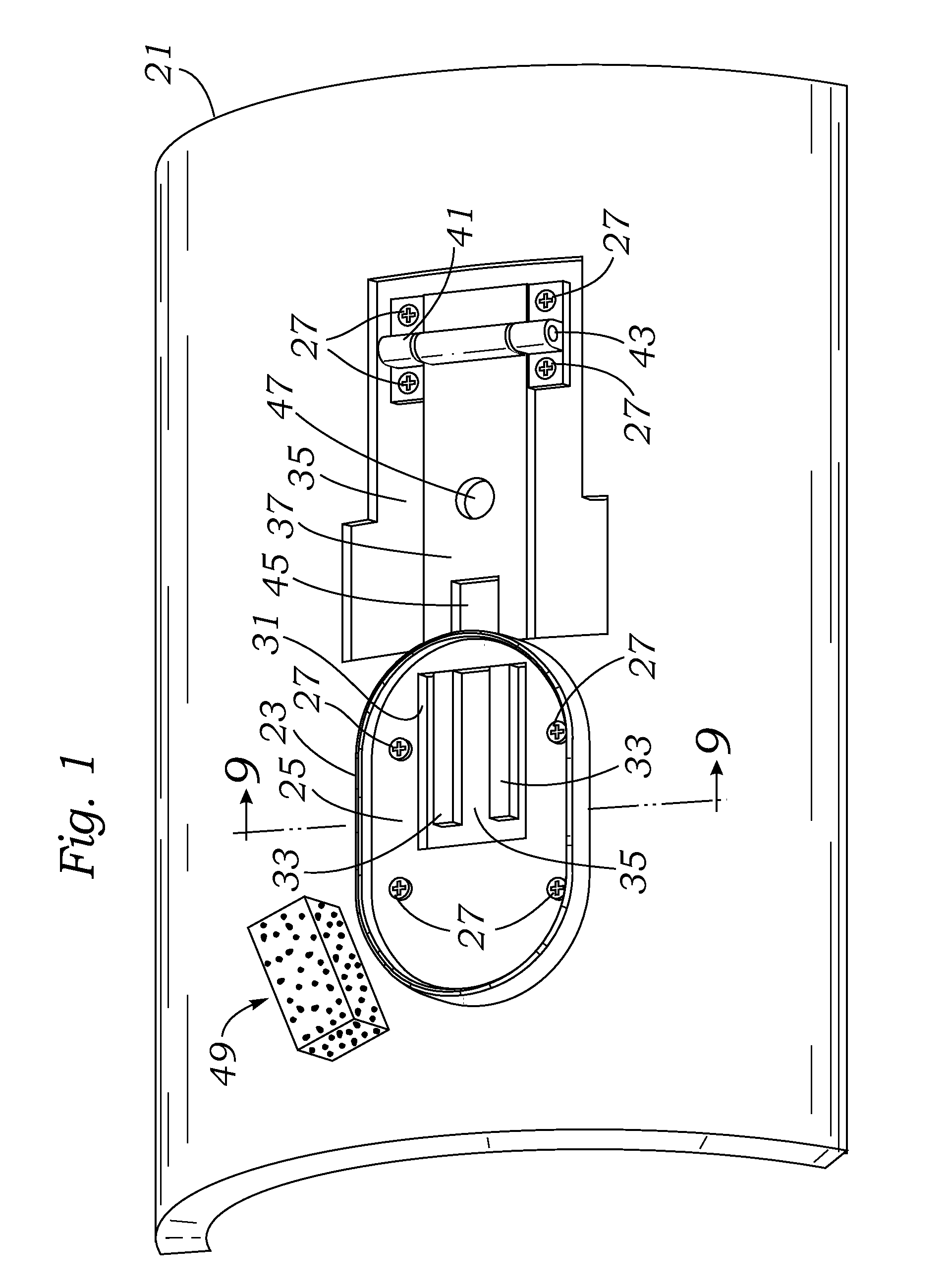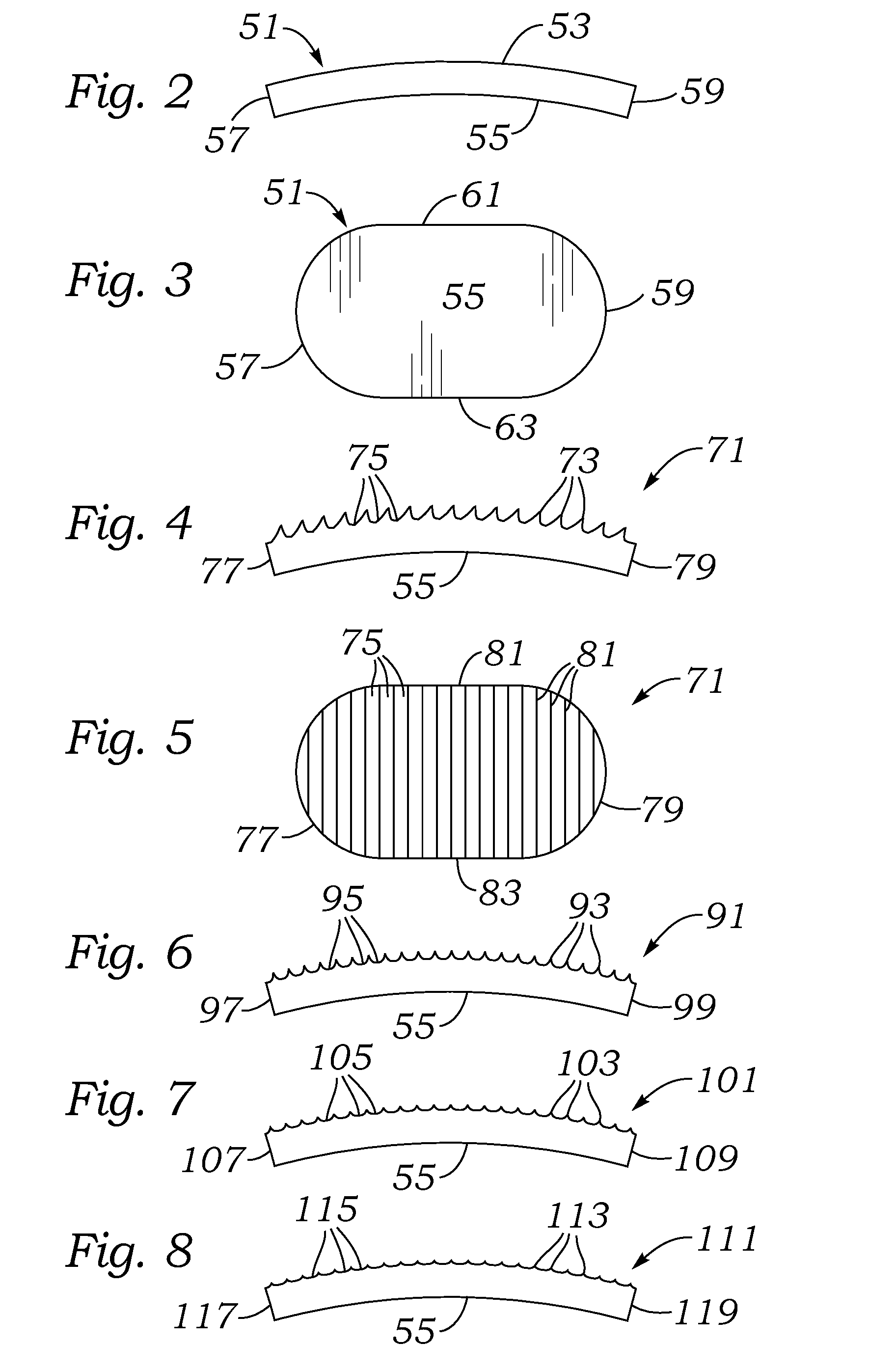Rotary die cutter insert
a rotary die cutter and insert technology, which is applied in the field of high-speed rotary die cutters, can solve the problems of insufficient scrap rejection assistance by rubber blocks, insufficient scrap elimination certainty, and inability to achieve the effect of scrap elimination and more control
- Summary
- Abstract
- Description
- Claims
- Application Information
AI Technical Summary
Benefits of technology
Problems solved by technology
Method used
Image
Examples
Embodiment Construction
[0032]Referring to FIG. 1, a perspective view of but one configuration of the use of the insert of the invention is illustrated. Within a curved blanking die roll section 21 which is made of a thickness of material, such as wood, polymer, fiber board or the equivalent. Curved blanking die roll section 21 may be of the type to fit onto a curved cutting die panel drum of a high speed Mitsubishi Evol rotary die cutter (not shown) and will turn opposite an anvil drum (also not shown). The view of FIG. 1 is an outside view of the curved blanking die roll section 21 showing the mounting of a die cutting rule 23 which may be a mounted in and carried by a thin laser formed slot in the curved blanking die roll section 21. The shape of the mounting of a die cutting rule 23 shown in FIG. 1 is that of an elongated circle or racetrack shape, typically used to cut box hand holds to facilitate grasping and carrying of a box manually from the outside.
[0033]Just inside the inner periphery of die cut...
PUM
| Property | Measurement | Unit |
|---|---|---|
| diameter | aaaaa | aaaaa |
| diameter | aaaaa | aaaaa |
| diameter | aaaaa | aaaaa |
Abstract
Description
Claims
Application Information
 Login to View More
Login to View More - R&D
- Intellectual Property
- Life Sciences
- Materials
- Tech Scout
- Unparalleled Data Quality
- Higher Quality Content
- 60% Fewer Hallucinations
Browse by: Latest US Patents, China's latest patents, Technical Efficacy Thesaurus, Application Domain, Technology Topic, Popular Technical Reports.
© 2025 PatSnap. All rights reserved.Legal|Privacy policy|Modern Slavery Act Transparency Statement|Sitemap|About US| Contact US: help@patsnap.com



